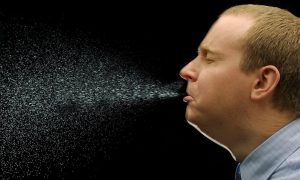Respiratory Hygiene/Cough Etiquette
Personal Protective Equipment
May 25, 2020daniels wedding
August 2, 2020Respiratory Hygiene/Cough Etiquette
Respiratory hygiene/cough etiquette infection prevention measures are designed to limit the transmission of respiratory pathogens spread by droplet or airborne routes. The strategies target 
Library filer of a man sneezing. More than six out of 10 Britons are taking to their beds for a week or more each year suffering from a cold, research showed Thursday October 27, 2005. The survey by The Sleep Council found that 62% of working people became bed-ridden as they nursed their cold. See PA Story HEALTH Colds. PRESS ASSOCIATION Photo. Photo credit should read: PAprimarily patients and individuals accompanying patients to the dental setting who might have undiagnosed transmissible respiratory infections, but also apply to anyone (including DHCP) with signs of illness including cough, congestion, runny nose, or increased production of respiratory secretions.
DHCP should be educated on preventing the spread of respiratory pathogens when in contact with symptomatic persons. Respiratory hygiene/cough etiquette measures were added to Standard Precautions in 2007. Additional information related to respiratory hygiene/cough etiquette can be found in the 2007 Guideline for Isolation Precautions pdf icon[PDF – 1.4 MB] Recommendations for preventing the spread of influenza are available at: https://www.cdc.gov/flu/professionals/infectioncontrol/.
for preventing the spread of influenza are available at: https://www.cdc.gov/flu/professionals/infectioncontrol/.
- Implement measures to contain respiratory secretions in patients and accompanying individuals who have signs and symptoms of a respiratory infection, beginning at point of entry to the facility and continuing throughout the visit.
a. Post signs at entrances with instructions to patients with symptoms of respiratory infection to—
i. Cover their mouths/noses when coughing or sneezing.
ii. Use and dispose of tissues.
iii. Perform hand hygiene after hands have been in contact with respiratory secretions.
b. Provide tissues and no-touch receptacles for disposal of tissues.
c. Provide resources for performing hand hygiene in or near waiting areas.
d. Offer masks to coughing patients and other symptomatic persons when they enter the dental setting.
e. Provide space and encourage persons with symptoms of respiratory infections to sit as far away from others as possible. If available, facilities may wish to place these patients in a separate area while waiting for care.
- Educate DHCP on the importance of infection prevention measures to contain respiratory secretions to prevent the spread of respiratory pathogens when examining and caring for patients with signs and symptoms of a respiratory infection.